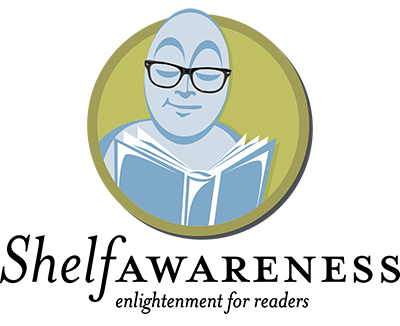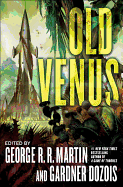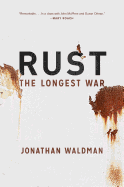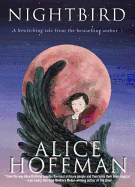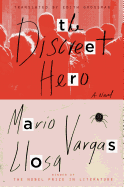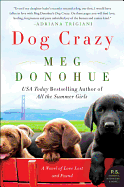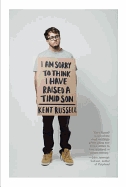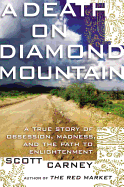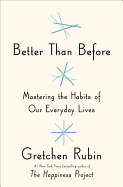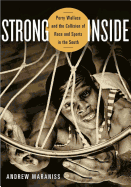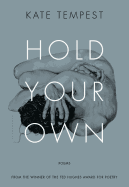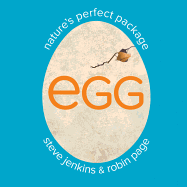Tuesday, March 17, 2015
"I am a believer in the power of words." --Mike Krzyzewski, Beyond Basketball: Coach K's Keywords for Success
Just for the record, I'll be rooting for Duke again in this year's NCAA March Madness college basketball tournament because, well, Coach K bought some books from me once. That's how fickle March Madness is, though readers have one consolation. As you watch your office pool bracket dreams inevitably shatter, here are a few excellent basketball-themed books to take your mind off the pain: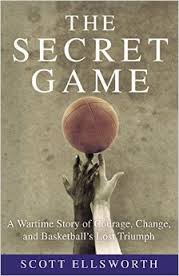 I prescribe Scott Ellsworth's amazing The Secret Game: A Wartime Struggle of Courage, Change and Basketball's Lost Triumph, with, as it happens, an intriguing Duke connection; and Strong Inside: Perry Wallace and the Collision of Race and Sports in the South by Andrew Maraniss, which is reviewed below.
I prescribe Scott Ellsworth's amazing The Secret Game: A Wartime Struggle of Courage, Change and Basketball's Lost Triumph, with, as it happens, an intriguing Duke connection; and Strong Inside: Perry Wallace and the Collision of Race and Sports in the South by Andrew Maraniss, which is reviewed below.
For a view from the bench, there is Wooden: A Coach's Life by Seth Davis, the new biography of legendary UCLA coach John Wooden; or The Carolina Way: Leadership Lessons from a Life in Coaching by longtime University of North Carolina coach Dean Smith, who died in February.
Maybe basketball-themed fiction is more tempting, like Kwame Alexander's award-winning YA novel The Crossover. Adult category titles worthy of more floor time include a reprint edition of Todd Walton's classic Inside Moves, which inspired the fine 1980 film; and William J. Torgerson's The Coach's Wife, about a small-town high school English teacher and coach in basketball-obsessed Indiana.
So fill out your bracket, read some great books between games, and heed the sage advice of sportswriter Jason Gay: "Maybe this is the year you get it right, that you ride a hot team and the perfect sleeper into the Final Four, and what happens in Indianapolis the first weekend in April has you on the verge of becoming an office legend. Until you invariably lose the pool to the co-worker who picked the Kentucky Wildcats because, you know, cats." --Robert Gray, contributing editor
The Discreet Hero
by Mario Vargas Llosa, transl. by Edith Grossman
Two sorely mistreated octogenarians come up with some dramatic solutions to their problems, which get all tangled up with each other in The Discreet Hero by Mario Vargas Llosa, the 2010 winner of the Nobel Prize for Literature.
Insignificant-looking Felícito Yanaqué, the frugal and hardworking head of a trucking business in the Peruvian town of Piura, has received an extortion note signed only with a drawing of a spider. Crime is on the rise in thriving, rapidly growing Piura, so it's no surprise that someone is hitting up successful Felícito for protection money, but he becomes the town hero by publicly defying the extortionists in the local newspaper.
At the same time, Ismael Carrera, prosperous insurance salesman in Lima, has overheard his treacherous twin sons discussing his eventual death with eager anticipation. In defiance, he has decided to marry his devoted servant, Armida, and cut his sons out of the inheritance before they find out about it.
What neither of these two octogenarians realize is that Felícito's wife and Ismael's mistress are sisters. As those two plots begin to entangle, an old favorite from previous Vargas Llosa novels, 62-year-old Don Rigoberto, is retiring from Carrera's insurance company. Don Rigoberto has a handsome teenage son, Fonchito, who is apparently being stalked by a sad, clever, seductive man who may very well be the devil.
Though the identity of the anonymous extortionist is discovered halfway through, with Vargas Llosa in control, it's all a pleasure--and he doesn't reveal the solution to one final mystery until the last delicious page. --Nick DiMartino, Nick's Picks, University Book Store, Seattle, Wash.
Discover: Two Peruvian octogenarians aim to foil some ruthless predators scheming after their wealth.
Dog Crazy: A Novel of Love Lost and Found
by Meg Donohue
Anyone who's resisting adopting a dog might well be swayed by reading Dog Crazy. In her third novel, Meg Donohue (How to Eat a Cupcake) presents a strong case for the power of canine companionship as protagonist Maggie Brennan learns the best friendships involve dogs and the humans at the ends of their leashes.
Making a fresh start in San Francisco after a lifetime in Philadelphia and the end of a stale relationship, Maggie arrives with her beloved 13-year-old retriever, Toby. She settles into a new apartment and her new career, in private practice as a pet bereavement counselor. But when Toby dies suddenly, Maggie not only can't counsel herself but also develops agoraphobia and acrophobia, trapping her among the San Francisco hills. (Fifty hills, she learns!) Patients come to her, fortunately, and when thoughtful Henry hires Maggie to help his younger, teenaged sister, Anya, recover from her dog Billy's disappearance, Maggie is forced to take small steps away from her own fears.
Escorted by neighboring ginger-haired poodle Giselle, Maggie and Anya search for Billy. A motley cast of homeless pups from SuperMutt Rescue, a volunteer group that Maggie can't resist serving, are the delightful supporting characters in this sure-to-end-well read. Anya's older brothers, Maggie's college-chum landlady and even the city itself nudge Maggie toward independence. Before long, she realizes that she might have found her own "forever home," for who can resist a city where love comes looking for lost companions? --Cheryl Krocker McKeon, manager, Book Passage, San Francisco
Discover: A feel-good novel featuring a pet bereavement counselor who conquers her own fears to bring joy to the people and pooches in her life.
Mystery & Thriller
The Bullet
by Mary Louise Kelly
In Mary Louise Kelly's second novel, The Bullet, Caroline Cashion goes for an MRI to assess what might be causing a persistent pain in her wrist and is shocked when the technician asks her how she came to have a bullet in her neck. Though Caroline chalks it up to a mistake, further x-rays reveal that, yes, she has a bullet in her neck--and absolutely no memory of how it got there. She naturally turns to her parents, with whom she is very close, for an explanation, and is startled to learn that she is adopted, that her biological parents were murdered, and that the bullet in her neck is in fact the same bullet that killed her mother.
Perhaps even more fascinating than the story of the bullet itself, though, is seeing how Caroline interacts with those around her. Kelly's other characters are as well defined and multi-layered as her protagonist: the aging, slightly inappropriate journalist at the Atlanta Journal-Constitution and the young, hip archivist at the same office; the doctor who listens to country music and drives a red Jeep; the Southern belle next-door neighbor who tells Caroline stories about her biological parents; and Caroline's two loving and protective older brothers.
The Bullet marks a different tack for Kelly, whose debut novel, Anonymous Sources, was a political thriller complete with terrorist threats and international spies. But the lack of political intrigue in The Bullet does not mean it lacks suspense; instead, its slow psychological build is riveting, and The Bullet is relentless in its twists and turns. --Kerry McHugh, blogger at Entomology of a Bookworm
Discover: The story of a woman with more to be afraid of than she ever could have imagined.
Science Fiction & Fantasy
Old Venus
by George R.R. Martin and Gardner Dozois, editors
Gardner Dozois (Rogues) and George R.R. Martin (A Game of Thrones) edit Old Venus, a diverse collection of masterful speculative fiction. These 16 short stories tell of a long-forgotten, fictional Venus, a planet with world-spanning oceans; year-round, sun-blocking clouds; and a fear-inducing, yet intriguing, set of strange alien lifeforms and dazzling Venusian artifacts. Old Venus harkens back to the planet as it was imagined in the days of pulp fiction--a lush, human-inhabitable yet alien setting based on our limited understanding (at the time) of Earth's nearest sunward neighbor.
Brilliant science fiction authors like Gwyneth Jones, Joe Haldeman, Eleanor Arnason, Garth Nix, Stephen Leigh and Elizabeth Bear contribute to this collection with stories as varied and wonderful as the history of science fiction itself. Jones's "A Planet Called Desire" evokes a pulp-fiction past with larger-than-life hero John Forrest, adding a feminist overlay to her depiction of a subjugated alien population and a woman in search of her missing son. Arnason's "Ruins" pits a Russian colony against a CIA presence on Venus, in a conflict that centers on a mysterious alien-created crater and attached military base. This story also entertains with a delightfully smart alien "pterosaur" named Baby and a National Geographic photographer robot named Maggie.
It's a heady ride through some of the best short fiction around from authors and editors who know how to craft tight, thrilling narratives, and who play with established genre tropes to great effect. --Rob LeFebvre, freelance writer and editor
Discover: Sixteen fresh stories bring the pulp past into the speculative now, each a mini-masterpiece of science fiction set on Venus.
Essays & Criticism
I Am Sorry to Think I Have Raised a Timid Son
by Kent Russell
For those who haven't yet encountered his writing in magazines like the New Republic and the Believer, Kent Russell's I Am Sorry to Think I Have Raised a Timid Son serves as a convenient introduction to his distinctive voice and his work exploring some of the more remote reaches of American popular culture.
Russell's vivid style is in full flower with his account of the Gathering of the Juggalos, a Woodstock-like music festival created by Psychopathic Records, the label founded by Insane Clown Posse. He has the same measured approach in a profile of Tim Friede. A truck plant worker from Fond du Lac, Wis., Friede has devoted his life to immunizing himself against the venom of the world's deadliest snakes, and Russell accords grudging respect to a man who "was born a freak of nature, being within it yet transcending it."
There are repeated interludes throughout the book recounting a visit Russell pays to his parents in California in the fall of 2013. Summoned there by his father, who hints that he may be dying, Russell writes essays that are part family history, part ill-matched buddy story. Above all, they're vulnerable dispatches negotiating the generational tensions between two men, one passing through late middle age and the other stumbling into early adulthood.
Whether it's hip-hop, venomous snakes or long-buried family memories, Kent Russell is the kind of writer whose sharp vision and lively prose have the power to seduce readers into paying attention to subjects they might never imagine were engaging. --Harvey Freedenberg, attorney and freelance reviewer
Discover: This book's journalism and personal essays explore the remote reaches of American pop culture.
Religion
A Death on Diamond Mountain: A True Story of Obsession, Madness and the Path to Enlightenment
by Scott Carney
A Death on Diamond Mountain: A True Story of Obsession, Madness and the Path to Enlightenment by journalist Scott Carney (The Red Market) tells the story of Ian Thorson's journey from a typical American childhood to the pursuit of transcendence through Eastern religion.
Thorson's road mirrors that of many (for Carney, too, as he is the first to admit). But incipient mental illness, coupled with the intense physical and psychological demands of the meditative practice and Thorson's exposure to some particularly dangerous teachers was a recipe for disaster.
A Death on Diamond Mountain succeeds on many levels. It is a fine piece of investigative journalism, a short history of Buddhism in the United States, a study of a particular geographical region in Arizona and the chilling account of Thorson's descent into madness and death. Carney recounts Thorson's life with empathy and discernment, adding layers of crackling tension in scenes where his family attempts an intervention and cult deprogramming. Even though the reader is already aware Thorson will die, the what-ifs raised here are pregnant with grief and lost possibilities.
While his book is first-rate entertainment, Carney also wrestles with deep questions about religious faith, the chicanery of self-styled gurus and the American capacity to appropriate complex cultural forms in a haphazard manner. Carney is brilliant at exposing the thin line between healthy religious devotion and obsessive-compulsive strain that can lead to tragedy. But when the reward is transcendence maybe seekers while always be willing to pay the price, or as Carney states, "How much is too much to risk for a chance to pierce the veil of divinity itself?" --Donald Powell, freelance writer
Discover: First-rate investigative journalism about a spiritual path gone wrong, American Buddhist self-proclaimed gurus and the cost of transcendence.
Psychology & Self-Help
Better than Before: Mastering the Habits of Our Everyday Lives
by Gretchen Rubin
"When we change our habits, we change our lives." The question Gretchen Rubin (Happier at Home) asked herself while crafting Better than Before: Mastering the Habits of Our Everyday Lives was not how habits affect our lives, but why we have so much trouble creating and maintaining positive habits when we're aware of the cost of doing anything else. After reading the latest scientific research on the subject of habitual behaviors and enlisting the help of family and friends, Rubin embarked on a journey to discover why some people appear to make and keep habits effortlessly while others struggle, and how we can all find a strategy to achieve the right routine.
According to Rubin, "The most important thing is to know ourselves, and to choose the strategies that work for us." In other words, she recognizes that wanting to form a healthy routine isn't enough; we must set ourselves up for success. Understanding motivation is the key to strategizing and, as in her previous books, Rubin relies on anecdotes from her own life to illustrate her points, many of them involving the loved ones who tested her theories and strategies.
In a world in which we are constantly reminded of the good habits we should follow yet simultaneously bombarded with temptations to do the opposite, Rubin's latest brainchild serves as a refreshingly sane touchstone. Smart, supportive and breezily honest about her own flaws, Rubin encourages us to get in touch with what we truly value, not impose challenging regimens in pursuit of unrealistic ideals. --Jaclyn Fulwood, blogger at Infinite Reads
Discover: This book carefully analyzes strategies that can help form habits and the equally powerful pitfalls and loopholes that can break them.
Science
Rust: The Longest War
by Jonathan Waldman
Rust: The Longest War is an entertaining, quirky tour through the landscape of oxidation and other forms of corrosion. It's full of stories about decaying structures, heroic solutions and characters whose egos and short-sightedness made bad problems worse; Jonathan Waldman introduces readers to people obsessed with documenting, studying and circumventing rust's destructive effects.
At 3% of GDP, Waldman notes in his introduction, "rust is costlier than all other natural disasters combined." The Statue of Liberty is a textbook example of its unstoppable and malignant nature. The statue's restoration in the 1980s was prompted by the accidental discovery that its cast-iron frame was near collapse from catastrophic rust. The project triggered political battles, strange alliances and the most successful fundraising campaign in U.S. history.
Waldman's section on aluminum beverage cans is equally strong; his irreverent wit, nose for a good story and investigative journalist's need for answers are on full display. He enrolls in Can School, a program offered by the world's largest supplier of aluminum beverage cans, and is all but blacklisted when he asks troubling questions about can failure and the risks of using BPA, a suspected carcinogen, to prevent corrosion. His book is well researched and lively, mixing just enough science with human interest, while offering a case study in corporate business tactics.
Including the story of the inventor of stainless steel and a photographer who captures the hidden beauty of a shuttered and decaying steel mill, Rust is wonderfully told, full of little known facts, sly asides and heroes and villains alike. --Jeanette Zwart, freelance writer and reviewer
Discover: A smart, entertaining, fascinating trip through the world of rust by a recent Ted Scripps Fellow in environmental journalism.
Sports
Strong Inside: Perry Wallace and the Collision of Race and Sports in the South
by Andrew Maraniss
Perry Wallace, Jr., was a quiet, respectful student from Nashville, Tenn., who excelled at school (especially in math and science), at playing the trumpet and on the basketball court. Though not a natural leader or revolutionary, when recruited by schools across the nation, he reluctantly "made the decision to attend Vanderbilt University not because of the fact that he would be a trailblazer, but in spite of it." When he enrolled in 1966, Wallace became the first African American to play in the Southeastern Conference, thus desegregating Deep South athletics. At Vanderbilt, he played in the same gym where Stokely Carmichael and Martin Luther King, Jr., participated in a speakers' symposium during Wallace's freshman year.
In his four years at "the Harvard of the South," Wallace was harassed, spat upon, called names and assaulted on the court in a series of "fouls" that went uncalled. (His coach told him to "learn to duck.") The away games in Mississippi were the worst, but even at Vanderbilt his classmates publicly ignored him, yet still cheered him on the court and furtively asked for his help with their homework.
Andrew Maraniss's Strong Inside: Perry Wallace and the Collision of Race and Sports in the South deftly reveals the nuances of Wallace's childhood, early education, groundbreaking career of torments and triumphs at Vanderbilt and the exceptional, well-rounded life that followed. A Vanderbilt alumnus, Maraniss shows great compassion and insight with a detailed narrative that is both broad and deep, covering the civil rights movement and college basketball with equal authority. Wallace's story is powerfully moving and deservedly, beautifully told. --Julia Jenkins, librarian and blogger at pagesofjulia
Discover: A perceptive, sensitive history of both basketball and desegregation in the late 1960s.
Poetry
Hold Your Own: Poems
by Kate Tempest
Aggressive and evocative language dominates this first published poetry collection by rapper and playwright Kate Tempest (Brand New Ancients). Hold Your Own relates the story of the blind prophet Tiresias, his childhood transformation into a girl by the Greek goddess Hera, subsequent womanhood and eventual reversion to manhood. A pawn in a quarrel between Zeus and Hera, Tiresias and his wisdom earn the violent, destructive scorn of the goddess and a "gift" of prophecy from the King of the Gods.
Tiresias's multiple metamorphoses (read: maturation and intellectual growth) provide fertile ground as each section recounts one phase of the prophet's life while simultaneously reflecting on modern life, human dislocation and mortality. "She is glass/ Amongst sand," Tempest writes of the girl Tiresias, forged through an intensity of experience like the heat of lightning, at once a part of her surroundings yet always separate, hardened and hemmed in.
Particularly poignant poems explore the duality of youth: the twin promises of vigor and inevitable decline. The young, exuberant in their power and potential, yet longing to be old; the old, scorning the ignorance and shallowness of youth but jealous, nonetheless, of what has been lost. The poetry contains much sympathy for the plight of the prophet, and of all living things. The reader is reminded that "[b]ecause the boy will grow up/ makes him no less innocent." Senescence and death are the tragedies that await all of us, no matter how wise or how naive, whether male or female, and the journey to these inevitabilities is fraught with much suffering and confusion. --Evan M. Anderson, collection development librarian, Kirkendall Public Library, Ankeny, Iowa
Discover: A powerful, poetic exploration of life and loss through the intermingling of classical mythology and modern unease.
Children's & Young Adult
Nightbird
by Alice Hoffman
Alice Hoffman melds magic and realism in a way that makes nearly anything seem possible. As she did in Green Angel, in Nightbird the author again explores themes of nature, rebirth and renewal.
Twelve-year-old narrator Teresa "Twig" Fowler confesses, "The only thing I'm good at is running. And keeping secrets. I'm excellent at that." Gradually, readers learn the source of her family's secrecy: Twig's nearly 17-year-old brother, James, has wings--thanks to a curse placed on their family 200 years ago by Agnes Gate, when Twig's "four-times-great-grandfather" stood her up on their wedding day. Ever since, all the males of the Fowler family have been born with wings. One day, the Hall family moves into Agnes's abandoned cottage with a girl Twig's age named Julia and a 16-year-old beauty named Agate. Twig avoids them--until Julia tells Twig she's seen her brother through the attic window, and so has her beautiful sister. No simple star-crossed love story, Hoffman's novel layers on multiple meaningful connections and mysteries. The town's "Gossip Group" attributes petty thefts to a "Sidwell monster." Twig and Julia set out to solve the mystery--before a full-on search starts in which her brother could be discovered and made scapegoat.
Hoffman's woods are a place of wonder and magic, where James takes flight and Twig goes on adventures. While Twig's mother lives in fear and secrecy, Twig discovers peace of mind through openness and friendship, and a faith that she can reverse the curse and free her brother from his attic cage. --Jennifer M. Brown, children's editor, Shelf Awareness
Discover: A consummate storyteller's layered tale of fear and faith, as 12-year-old Twig seeks to free her family from a centuries-old curse.
Egg: Nature's Perfect Package
by Robin Page and Steve Jenkins, illus. by Steve Jenkins
In a fascinating survey of inhabitants of land, sea and sky, the husband-and-wife team behind My First Day takes readers to the encasement from which various creatures hatch.
Robin Page and Steve Jenkins begin with a variety of "egg layers," with the parent at the top; next, an image of its egg, often enlarged; followed, at the bottom, with the egg's actual size. Jenkins's collage images depict textures that range from the smoothness of a banana slug to the prickles of an echidna. The authors point out nature's contradictions: "The kiwi, a bird smaller than a chicken, is thousands of times larger than the egg of a giant squid." The number of eggs each animal produces varies wildly: the fish tapeworm can produce a million eggs a day for 20 years, while a royal albatross lays a single egg every two years. Children will delight in details tucked away on each spread. A mother splash tetra, for instance, is a fish that "leaps from the water and attaches her eggs to an overhanging leaf," and the gender of a baby alligator is determined by temperature ("Warmer parts of the nest produce males, cooler ones, females").
The thoughtful design allows for meaty captions and a variety of ways to display visual information. The predominant greens of the red-eyed tree frog's eggs contrast nicely with the red markings on the shell of the brine shrimp. Parallel time-lapse images depict developing eggs of a chicken and alligator, and detailed endnotes offer additional size and habitat information for each creature featured. --Jennifer M. Brown, children's editor, Shelf Awareness
Discover: A fascinating close-up view of eggs--where they're laid, how many, how often, how big, and much more.

